Average 2-Mile Run Time: 4 Ways + 4 Tips To Run Faster
Author:
Unlock your full potential by engaging with our experts and community! Have questions about your fitness journey or looking for expert advice on weightlifting techniques? Don’t hesitate — leave a comment below and Oleksandr Zagrebelnyi will provide a personalized answer and insights to help you reach your goals.
Torokhtiy is reader-supported. Some links are affiliate links, and we may earn a commission at no extra cost to you. See our disclosure page for details.
Curious about the average 2-mile run time and how it differs across age groups? Knowing the average 2-mile run time by age can help you evaluate your running progress and determine if you’re meeting expectations. In this article, we explore the correlation between age and 2-mile run times, providing valuable insights to help you gauge your performance and set realistic goals.
How long does it take to run 2 miles? – The average 2-mile run time is typically between 12 and 17 minutes, depending on factors like age and fitness level. However, it’s essential to set personal goals based on individual capabilities and gradually improve over time.
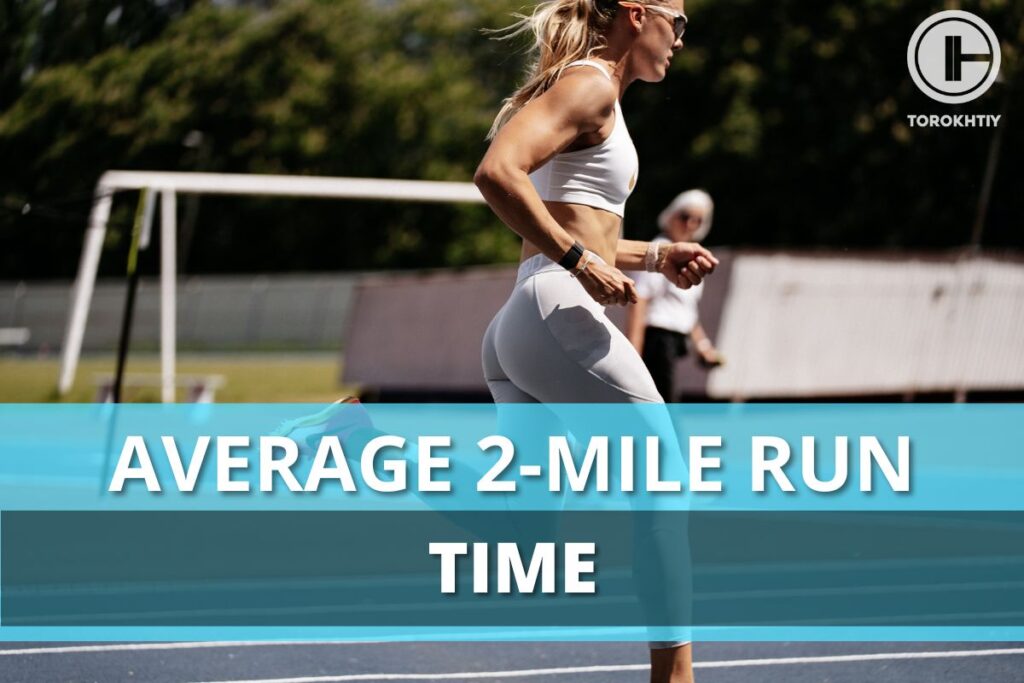
How Far Is a 2-Mile Run?
When it comes to running, it’s important to understand distances so you can set goals, track progress, and plan your workouts effectively. Let’s explore how far 2 miles is and discuss different ways to measure this distance.
1. Kilometers
One mile is approximately equal to 1.609 kilometers. If we multiply 2 miles by 1.609, we get an approximate distance of 3.218 kilometers.
2. Steps
Calculating the number of steps needed to cover 2 miles during a run can be a bit more complex. This depends on various factors, including your stride length (which is the distance covered in one step). On average, a person’s stride length while running can range from 2.2 to 2.5 feet. Let’s assume an average stride length of 2.3 feet to simplify the calculation.
Tips From the Champ
To find the number of steps needed for 2 miles, we first need to convert the stride length to miles. There are 5,280 feet in a mile, and two miles has 10,560 feet. Dividing that number by 2.3 feet per stride gives us approximately 4,59 steps.
Running Coach Nike Run Club Kyiv
How Long Is an Average 2-mile Run Time?
Many runners wonder how long does it take to jog 2 miles? It’s important to consider various factors, such as gender, age, fitness level, and training experience when determining the answer.
In different groups, there are various standards used to assess physical fitness and endurance. For example, the United States military has its own standard for a 2-mile run as part of the Army Physical Fitness Test (APFT), where the maximum score is typically achieved by completing the run in around 13 minutes.
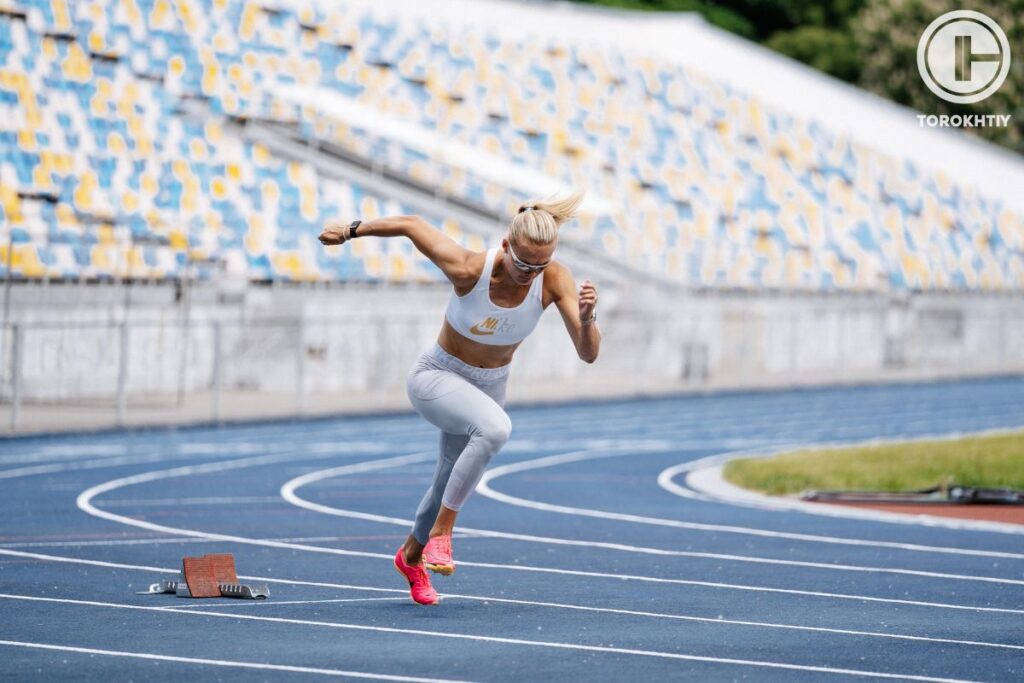
Similarly, law enforcement agencies often have their own standards, with a common requirement being around 15-16 minutes to complete a 1.5-2-mile run.
When it comes to the best 2-mile time, elite athletes and highly trained runners achieve exceptionally fast results. Elite male runners can finish a 2-mile run in less than 9 minutes, while elite female runners can do it in less than 10 minutes. Speeds like this require extraordinary physical prowess and devoted training.
Average 2-mile run time for beginner male is usually around 20-30 minutes, while intermediate runners, who have some training and improved fitness, can often complete the 2-mile run in approximately 15-20 minutes.
Average 2-Mile Run Time by Age and Experience Level for Females
The table below presents the average 2-mile run time by age for girls and women across different experience levels:
| Age | Beginner | Intermediate | Advanced |
|---|---|---|---|
| 10 | 26:08 | 19:12 | 16:56 |
| 15 | 23:27 | 17:14 | 15:12 |
| 20 | 22:20 | 16:24 | 14:28 |
| 25 | 22:20 | 16:24 | 14:28 |
| 30 | 22:20 | 16:24 | 14:28 |
| 35 | 22:28 | 16:31 | 14:33 |
| 40 | 22:56 | 16:51 | 14:51 |
| 45 | 23:46 | 17:27 | 15:23 |
| 50 | 24:59 | 18:21 | 16:11 |
| 55 | 26:25 | 19:25 | 17:07 |
| 60 | 28:02 | 20:36 | 18:09 |
| 65 | 29:51 | 21:56 | 19:20 |
| 70 | 31:55 | 23:27 | 20:41 |
Average 2-Mile Run Time by Age and Experience Level For Males
The table below displays the average 2-mile run time by age for boys and men across various experience levels:
| Age | Beginner | Intermediate | Advanced |
|---|---|---|---|
| 10 | 23:42 | 16:53 | 14:44 |
| 15 | 20:31 | 14:36 | 12:45 |
| 20 | 19:49 | 14:07 | 12:19 |
| 25 | 19:49 | 14:07 | 12:19 |
| 30 | 19:50 | 14:07 | 12:20 |
| 35 | 20:10 | 14:21 | 12:32 |
| 40 | 20:51 | 14:51 | 12:58 |
| 45 | 21:39 | 15:25 | 13:27 |
| 50 | 22:29 | 16:01 | 13:59 |
| 55 | 23:24 | 16:40 | 14:33 |
| 60 | 24:24 | 17:22 | 15:10 |
| 65 | 25:29 | 18:09 | 15:51 |
| 70 | 26:46 | 19:03 | 16:38 |
For those of you wondering how fast should I run 2 miles, remember that these average times are a general guideline for boys and men in different age groups and experience levels. Your training, fitness level, and natural dedication play significant roles in improving your 2 mile-run time.
Regular practice, appropriate training programs, and gradual progression can help you achieve your desired goals.
Running Time Calculator: 2-Mile Run
This calculator can help you to determine the approximate time it takes to complete a 2-mile run, considering factors such as your gender, level of training, and age.
Running Time Calculator
Result:
4 Tips How to Run 2 Miles Fast
Running 2 miles can be a challenging distance, requiring both speed and endurance. Whether you’re aiming to improve your personal best or preparing for a race, here are some tips to help increase your 2-mile run time and prepare effectively.
1. Set Clear Goals and Create a Training Plan
Setting clear goals is essential when preparing to run 2 miles fast. Determine the specific time or pace you want to achieve for the race. Having a clear target in mind will keep you motivated and focused. Once you have set your goals, create a training plan that includes a mix of distance runs, speed workouts, and recovery days.
Gradually increase your weekly mileage and incorporate interval training to improve your speed and stamina.
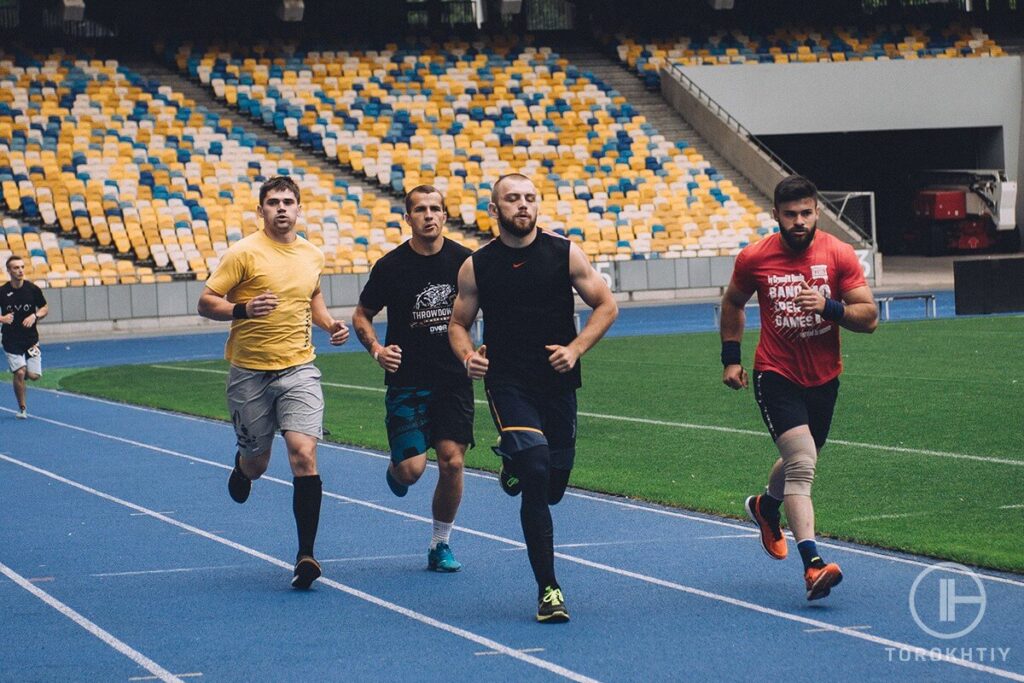
2. Focus on Speed Workouts
Speed training is crucial for enhancing your anaerobic capacity and quickening your overall pace. Interval training is one type of exercise in which you run quickly for a certain amount of time or distance before slowing down to a jog or walk to recuperate. Hill repetitions, where you quickly run up a hill and recuperate by jogging or walking back down, are also useful.
3. Build Endurance with Long Runs
To improve your endurance for a 2-mile race, incorporating long runs into your training routine is essential. During these longer runs, gradually increase the distance over time to challenge your cardiovascular fitness and stamina.
Aim for one or two longer runs each week, maintaining a comfortable pace that allows you to hold a conversation without excessive breathlessness.
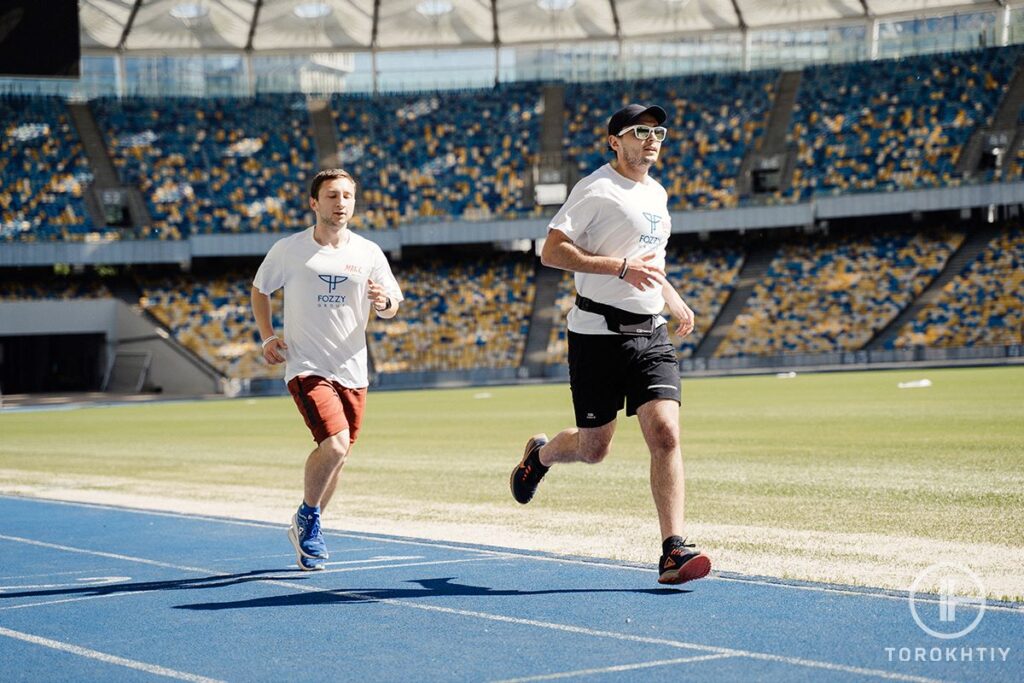
4. Practice Race-Specific Strategies
In the days leading up to the race, it’s important to practice race-specific strategies to familiarize yourself with the course and build confidence. Visit the race location, if possible, and run a few practice miles on the course to identify any challenging sections and plan your race strategy accordingly.
Experiment with different pacing strategies during your practice runs, such as starting with a slightly faster pace or maintaining a steady pace throughout.
4 Tips How to Improve Your 2-Mile Running Time
Running is a great cardiovascular exercise that helps build endurance and improve overall fitness. If you’re looking to enhance your performance and decrease your 2-mile run time, here are some tips to consider:
1. Build Strength
Incorporate strength training exercises into your routine, specifically targeting your lower body. Squats, lunges, calf raises, and leg presses are great for strengthening leg muscles, which can enhance your running speed and efficiency. Additionally, core exercises like planks and Russian twists help improve stability and posture.
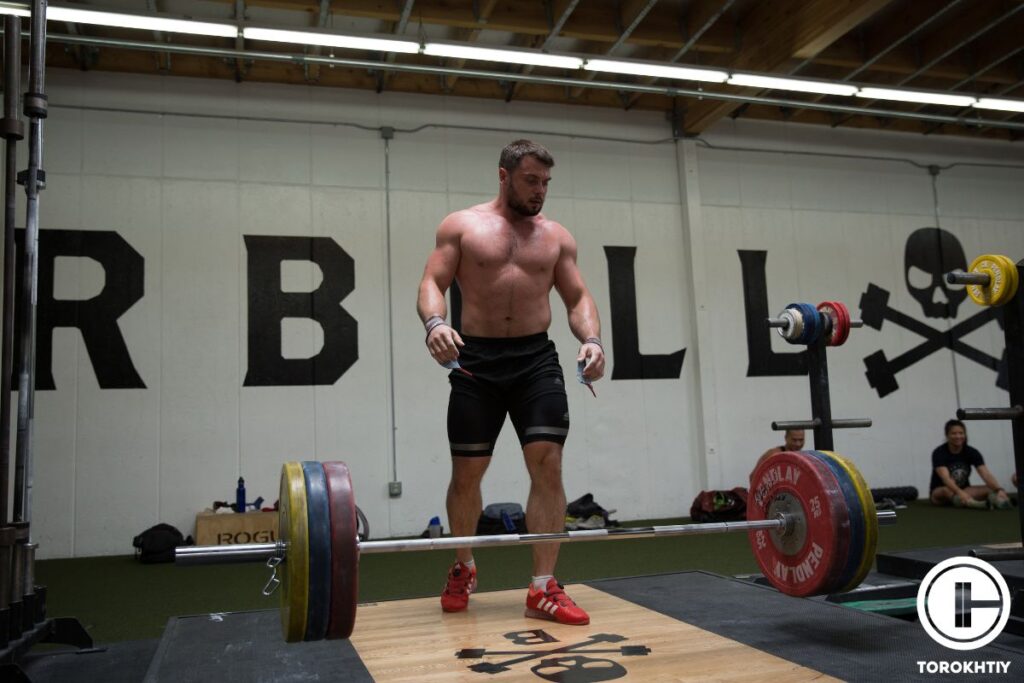
2. Focus on Running Form
Pay attention to your running form, as it greatly affects your speed and energy expenditure. Maintain an upright posture, with your head aligned with your spine. Relax your shoulders and swing your arms naturally. Land on the middle of your feet and avoid overstriding to prevent inefficiency and injuries.
3. Include Tempo Runs
Tempo runs are sustained efforts at a comfortably challenging pace. By running at this pace, you improve your body’s ability to handle lactic acid build-up and sustain a faster pace for longer periods. Start with one or two tempo runs per week and gradually increase the intensity and duration.
4. Remain Consistent and Patient
Improving your running time takes time and commitment. Stick to your training plan, stay dedicated to your goals, and be patient. Results won’t happen overnight, but with consistent effort, you’ll see gradual improvements. Celebrate the small victories and remember that persistence pays off in the long run.
Hoka Bondi 8
- Material: Breathable and supportive mesh upper
- Sole Material: Full-length EVA midsole for maximum cushioning
- Outsole (tread feature): Durable rubber outsole with a unique lug pattern
- Drop: 4mm
- Season: Suitable for all seasons
- Special Features: Exceptional cushioning and comfort
- Size: Available in various sizes
- Type: Maximum cushioning running shoe
If you want excellent running or walking shoes or just footwear you’ll be comfortable in, you can’t go wrong with the Hoka Bondi 8.
It’s been upgraded and now they have lighter, softer materials and a new extended heel design. The heel design gives a super soft, balanced feeling from th emoment your heel hits the ground to when you push off with your toes.
As far as the weight goes, it’s around 10.80 ounces, and the heel drop is 4 mm. They’re not too heavy and the lower drop is a good balance between cushioning and feeling connected to the ground.
The Bondi 8 is focused on cushioning and keeps things simple. There’s a good amount of support without any extra stuff that you don’t really need and that would only jack up the price. Take the rear crash pad, for example – it makes for a soft, smooth ride, which is perfect if you like to run outdoors.
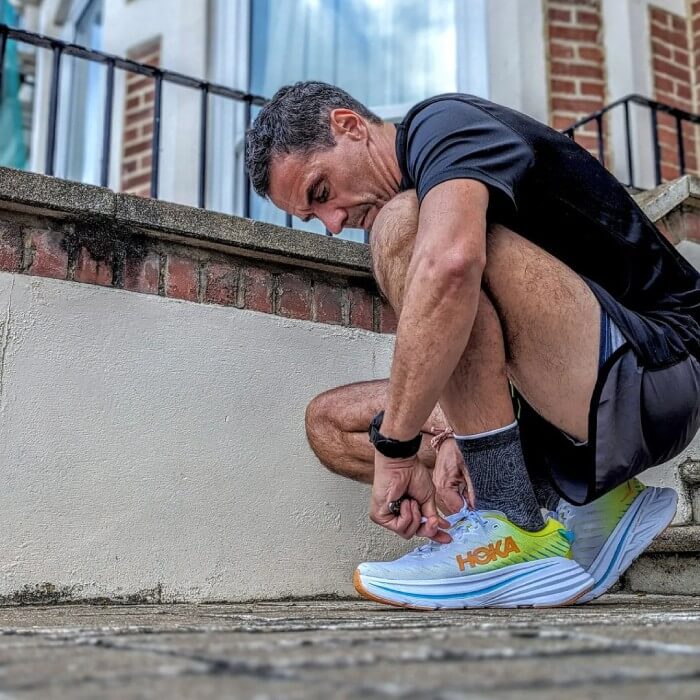
The upper part is made of engineered mesh, which is breathable and keeps your feet cool and dry. The tongue and collar have memory foam and mold to your foot shape. All of these features make the fit snug but flexible, which is exactly what you would want.
The Bondi 8 is eco-friendly because it uses recyclable materials in parts like the mesh and the sockliner. Plus, the shoes are completely vegan, which (if that’s important to you) is nice!
Frequently Asked Questions About Average 2-Mile Run Time
Is 2 miles in 15 minutes good?
Remember that the average time for 2-mile run female is around 15 minutes so running 2 miles in 15 minutes is generally regarded as a good two-mile time. It indicates a solid level of fitness and above-average speed.
What is a good 2-mile time for a 12-year-old-boy?
On average, boys in this age range complete a 2-mile run in approximately 16-18 minutes. It’s important to remember that individual capabilities and training levels can vary, so focusing on personal improvement and enjoyment of running is key.
Can you run 2 miles in 10 minutes?
Running 2 miles in 10 minutes is an impressive feat and generally falls within the realm of elite runners and highly trained athletes. Achieving such a time requires exceptional speed, endurance, and training.
Final Thoughts on Average 2-Mile Run Time
In summary, understanding the average 2-mile run time provides valuable insights into one’s fitness level and progress. Remember, the average 2-mile run time varies depending on factors like age, fitness level, and experience. Stay consistent with your training, gradually increase your pace, and strive to beat your personal records.
Also read:
References:
- How fast/far did you run? // Running Level: https://runninglevel.com/?utm_source=strengthlevel&utm_medium=calculator&utm_campaign=launch
- The Army Physical Fitness Test (APFT): a review of the literature // PubMed: https://pubmed.ncbi.nlm.nih.gov/2498771/
- What is a good 2 mile run time? // Running Level: https://runninglevel.com/running-times/2-mile-times
- Contact to Nature Benefits Health: Mixed Effectiveness of Different Mechanisms // MDPI: https://www.mdpi.com/1660-4601/15/1/31
- THE EFFECTS OF AEROBIC AND ANAEROBIC TRAINING ON AEROBIC AND ANAEROBIC CAPACITY // The Journal of International Anatolia Sport Science: https://doi.org/10.5505/jiasscience.2018.68077
- Strength and Resistance Training Exercise // Heart Attack, Stroke and Cardiac Arrest Symptoms: https://www.heart.org/en/healthy-living/fitness/fitness-basics/strength-and-resistance-training-exercise
- Photos by Torokhtiy Media Team.
Why Trust Us?
With over 20 years in Olympic weightlifting, strength training, nutrition coaching, and general fitness our team does its best to provide the audience with ultimate support and meet the needs and requirements of advanced athletes and professional lifters, as well as people who strive to open new opportunities and develop their physical capabilities with us.
By trusting the recommendations of our certified experts in coaching, nutrition, and sports training programming, as well as scientific consultants, and physiotherapists, we provide you with thorough, well-considered, and scientifically proven content. All the information given in the articles concerning workout programming, separate exercises, and athletic performance, in general, is based on verified data.
The product testing process is described in more detail here.
Oleksandr is a running coach and member of the Nike Run Club coaching team for 8 years. A participant in national and international competitions at distances from one kilometer to the ultra trail. Owner of mountain trail running camps. Nowadays Oleksandr is responsible for creating running training programs for athletes of various levels, coaching personally offline and online, conducts trail running camps in the mountains, participates in competitions.



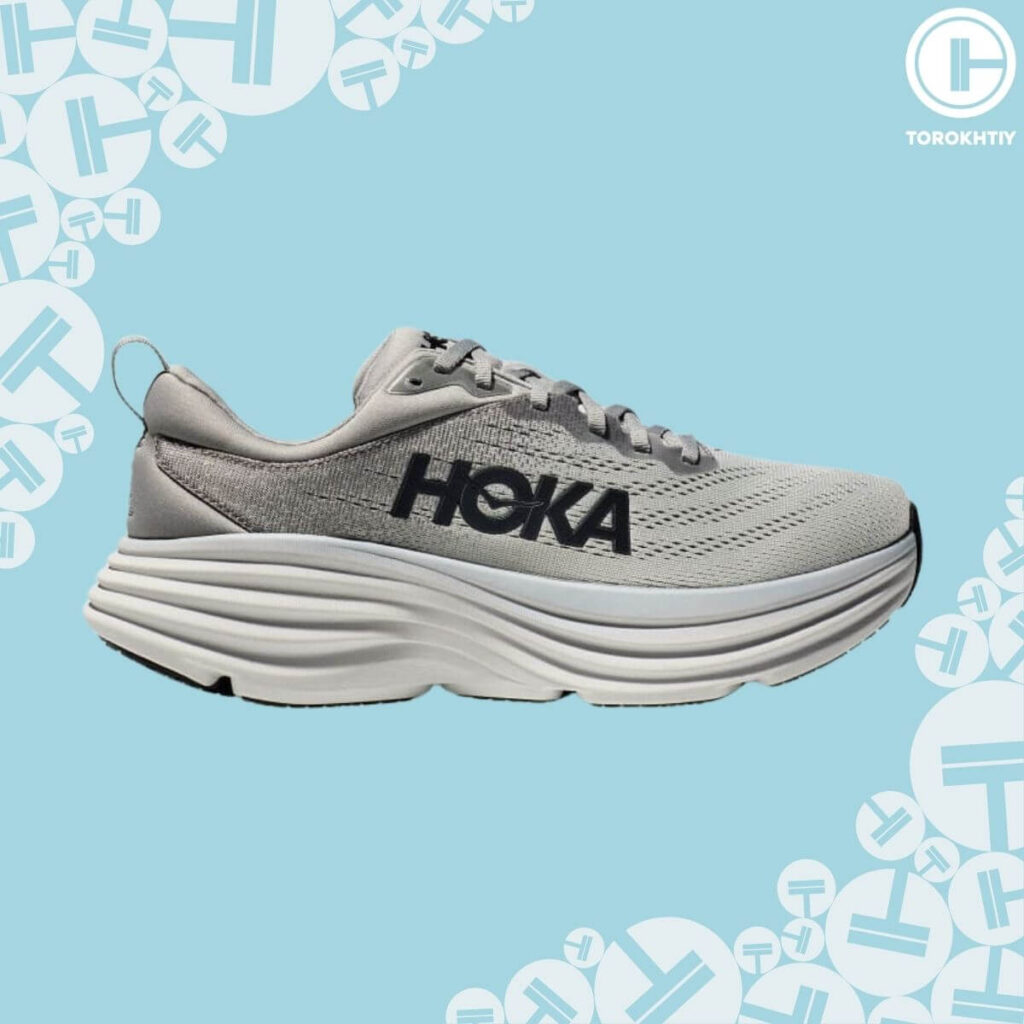
Still have questions after reading our article? Unlock your full potential by engaging with our experts and community! Don’t hesitate — leave a comment below and Oleksandr Zagrebelnyi will provide a personalized answer and insights to help you reach your goals.